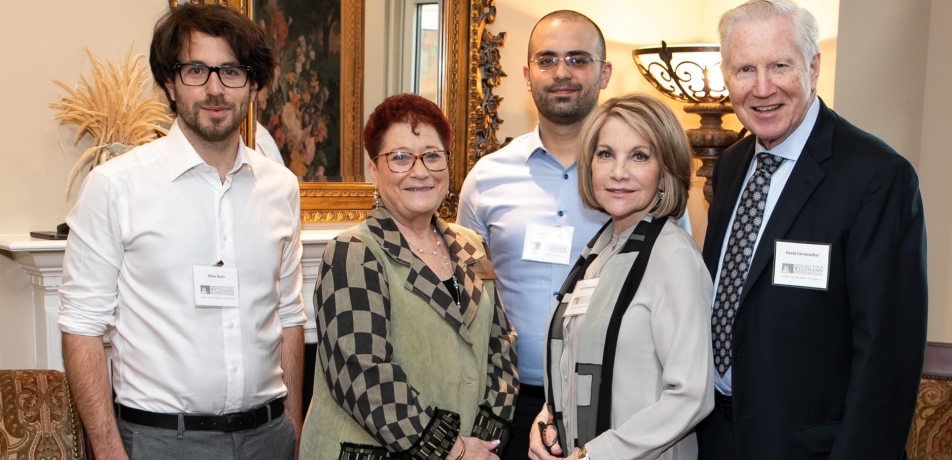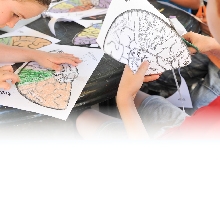Scientists of Tomorrow annual tour
Weizmann students are asking—and answering—tough questions
Features

L to R: FGS student Omer Karin, Jill Moscowitz of the American Committee, FGS student Daoud Sheban, and hosts Jane and David Fairweather in Washington D.C.
They are young, smart, and passionate about science. Weizmann Institute graduate students are the face of Israel’s next generation of scientists, and earlier this month their talents were on display in a whirlwind series of meetings with North American supporters.
Three groups of Feinberg Graduate School doctoral students talked to friends and supporters of the American Committee for the Weizmann Institute of Science on the East Coast and West Coast, and in the Midwest, and friends of Weizmann Canada about their respective research areas. Here’s a taste of the questions—and answers—each is pursuing:
How can olive pits shed light on past climate? Olives aren’t just the quintessential Mediterranean natural snack—they can also offer clues to ancient climates. This is the focus of Yael Ehrlich’s research in the Archaeological Sciences Unit, under Profs. Steve Weiner and Elisabetta Boaretto. Investigating the annual growth—indicated by tree rings—in olive wood, Yael has helped home in on the approximate date of the catastrophic volcanic eruption of Santorini, Greece, which affected the ancient civilizations surrounding the Mediterranean, one of the biggest quandaries in archaeology.
How does disease risk increase with age? It’s a question that Omer Karin, in the lab of Prof. Uri Alon in the Department of Molecular Cell Biology, is answering by studying senescent cells—cells that have stopped dividing but don’t die, and which tend to accumulate in aging tissues. He’s using a mathematical approach to understanding the dynamics of tissues, and how these dynamics go awry in the case of disease and aging.
Water is naturally dynamic. What can we learn from its movement? Michal Shavit is studying hydrodynamics—the study of the motions of fluids—and how electrons flow like water, under the guidance of Prof. Gregory Falkovich in the Department of Physics of Complex Systems. Though the study of fluids goes back at least to the days of ancient Greece, it still holds one of the greatest and challenging open problems in classical physics—turbulence.
How does DNA fit so compactly into cells? The answer lies in the structure of chromatin, and Daoud Sheban is studying the molecular events that reshape chromatin—and therefore allow it its compactness—during the very early embryonic development of mammals. Daoud is pursuing his PhD under both Dr. Yifat Merbl of the Department of Immunology and Dr. Jacob Hanna in the Department of Molecular Genetics. Among other findings, he has identified a novel structural modification in chromatin critical for embryonic stem cell development.
What are natural killers? (Don’t be scared. It’s a science term.) Working in the lab of Prof. Ido Amit in the Department of Immunology, Adam Yalin is utilizing single-cell RNA sequencing technologies to study a population of cells called natural killers (NK) that help the body respond under the stresses of pregnancy and cancer. If he defines new NK populations, they could be useful targets in future anti-cancer studies and understanding the maternal immune system.
How does our brain sense, perceive, and learn? This is the research focus of Akiva Rappaport, who is studying in the lab of Prof. Ilan Lampl in the Department of Neurobiology. His goal is to bring to light the mechanisms through which neural signals are modulated in the brain’s cortex and their effect on perception and learning.







